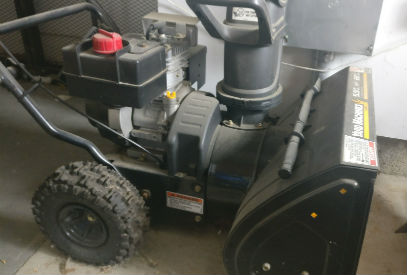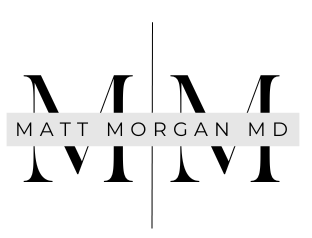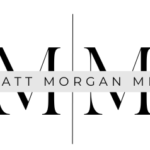Your body is an amazing machine
It’s the smell of formaldehyde that lingers with you the longest. It gets into everything: clothing, books, even your pencil. It was October in my 1st year of medical school, and I couldn’t help thinking what a great haunted house we could create in our anatomy lab with our cadavers, which were in various states of dissection. If you could just dim the lights, adjust the positions, and add some creepy music, you’d have a pretty grizzly scene.
Medical school human anatomy class is what first made me feel like a doctor. It was my introduction to the amazing machine that is the human body. In anatomy, you learn the laundry list of all the thousands of parts and where they fit. Then there’s the physiology–the intricate and sometimes baffling processes that coordinate life. Each organ system has a role–neurological, respiratory, cardiovascular, gastrointestinal, endocrine, reproductive, and musculoskeletal–all intimately coordinated and orchestrated. What made it most interesting was the practicality of it all. When you study anatomy and physiology, you are studying YOU. Everyone has his or her own copy.
Knowing how your body functions is important. Your body is your foundation. It is the platform for your entire life experience. It’s the basis for all you do and how you feel. Yet, many people fail to learn how it works and how to keep it in top condition.
Use it or lose it
 Have you ever let a machine sit unused for a prolonged period of time? I have. I let a snowblower sit in my garage untouched for seven years. When a neighbor moved and I “inherited” a better one, I had planned to sell the old one right away. But, you know how it goes. Days turned into months, and months turned into years. A machine that was in working condition will now take a lot of work and reconditioning to get it running again.
Have you ever let a machine sit unused for a prolonged period of time? I have. I let a snowblower sit in my garage untouched for seven years. When a neighbor moved and I “inherited” a better one, I had planned to sell the old one right away. But, you know how it goes. Days turned into months, and months turned into years. A machine that was in working condition will now take a lot of work and reconditioning to get it running again.
Your body is like that. It is quite literally a machine. It needs to be used. It needs to be pushed. Did you know that your bones need mechanical stress or they will start to break down? As a doctor, I see this all the time after an injury. The bone structure disappears. The same thing is true for your heart and other muscles. When I injured my knee and had to be on crutches for 6 weeks, I watched my once strong leg atrophy down to something resembling a toothpick. And you’ve probably heard that being in outer space is a problem for the health of astronauts because there is no resistance of gravity. Your body literally needs opposition to thrive.
Victims of our own success
I would be willing to wager that our ancient ancestors did not think much about exercise. Life itself was exercise: hunting for food, hauling water, climbing hills, being chased by lions. These were not only pretty good workouts, they determined very survival.
Then sometime around the agricultural revolution, when we transitioned from hunter/gatherers to farmers, we began the slow but steady progression to a sedentary lifestyle. Physical fitness and strength has become less necessary in our day-to-day activities.
Technological progress has been a two edged sword. While we’ve eliminated risks of being eaten by lions, we’ve traded them for risks of obesity and inactivity. If we don’t counter the trend, we could end up with something like this:
Somehow in our stunning technological progress as a species (mixed perhaps with our beliefs in our exceptionalism to all other creatures on the planet), we seem to have forgotten that we are still fundamentally and literally animals. No matter your philosophical or religious belief about how and why we exist, there is no escaping that we are physical creatures–bone, muscle, nerves, and sinew. We are born, we live for a period of time, and we die. Along with all other animals, we are subject to pain, injury, and illness. And now, in many cases, that illness is of our own making.
For many of us, the greatest threat to our healthy existence is our lack of activity. We just don’t need to DO much any more. Physical activity has become optional. Instead of walking or running, we drive. Instead of climbing hills, we ride elevators. Instead of playing games outside, we sit on the couch and play in virtual reality. I’m not judging, I’m as guilty as anyone. But these physical bodies pay a price if they are ignored. They need the motion and stimulus that all animals require. Since we’ve lost the natural stimulus in our daily existence, we need to create other ways to mimic it.
What is exercise anyway?
The word exercise carries a lot of baggage. If you feel a negative response, it’s likely due to years of abandoned New Year’s resolutions, unused gym memberships, and idle exercise equipment. You may think of exercise as painful, as something to be avoided, and as having lots of obstacles.
For a moment, let’s step back and strip away all your preconceived notions of exercise. In fact, instead of the word ‘exercise’ let’s just call it purposeful body motions (now that doesn’t sound so bad does it?). Remember, since you don’t run from lions and have to haul heavy buckets of water, your body really needs you to give it some practice movements to keep it in tip-top shape. Remember the old snowblower in the garage . . . you can’t just let it sit for years and then expect it to function.
Know your “why”
Before you will make a change, decide why you care. You need a motivating belief. Everyone will have his or her own reasons for wanting to be in good shape. Here are mine:
- I want to feel good. Feeling good is what allows me to do everything else.
- I want to live longer. I don’t really know what longer will mean, but I certainly don’t want to cut things short due to choices that are in my control. I want to be around for my kids and grandkids. I want to have time to experience a lot of life.
- I want to live an active lifestyle–even in middle or advancing age. I want to play sports with my kids, hike tall mountains, paddle board, water/snow ski, and travel.
- I want to be strong enough to avoid injury. I don’t want to be a victim of ‘weekend warrior’ issues like back strains, pulled hamstrings, or other injuries due to weakness and deconditioning.
Or, for some, it’s not the positive message that gets their attention, it’s the negative:
- You can’t do things you used to (you find yourself opting out of physically demanding activities)
- You see yourself in a picture (do I really look like that?)
- You have a wake up call (a doctor visit that reveals something is amiss inside your body)
Think about what your “whys” are for physical fitness.
The Goal: Efficient and Practical
As I looked for an “ideal” exercise approach, I had certain criteria. I’m a pretty practical personality. I have a full time job. I can’t (or don’t want) to significantly rearrange my life to build fitness activity into my day (e.g. riding my bike to work, doing my own carpentry work, etc.).
I want optimization. I want the ‘minimum effective dose’ that will have maximal effect in less than 30 minutes a day. I am not interested in fitness obsession. I am not trying to win competitions. I am not trying to obtain a superhero physique. I believe in the Paredo principle, i.e. that 80-90 percent of benefits come from doing the basics. I want a “set and forget” method that just works. I want to plug into a plan that I know will keep me fit and strong, so I can focus on other things.
I don’t want to re-invent the wheel. I want to lean on the expertise of others who have dedicated their lives/careers to fitness training rather than having to become an expert myself. I want it to be something my wife can do with me so we can support each other. I want it to challenge me (in a good way). I want variety.
I want it to be easy without obstacles (excuses). I want to form a habit. I want to be able to do it at home or hotels, anytime of day, and without any equipment.
Most of all, I want it to be sustainable–something I can imagine doing for the rest of my life.
The good news is, I’ve found something that matches all of these criteria. After not having ever really exercised consistently since high school (now over 20 years), I’m now doing something that I’ve been able to sustain for over a year and a half, 5 days a week, rain or shine. I’m in the best shape of my life. I’ve lost fat and gained muscle (18 to 13 percent body fat). My endurance has increased. I’m much stronger. I feel 10 years younger.
This approach is best suited for the following types of people:
- You are somewhere post-college, pre-nursing home
- You have never really liked exercise
- You don’t have much time
- You don’t want to spend a lot of money
- You don’t like the idea of gym memberships (travel, public display, cost)
- You’ve tried and quit many times
- You haven’t seen many results from your efforts
- You don’t how
- You can’t seem to stay motivated
On the other hand, if you fit any of the following categories, then this may not appeal to you
- You already have a routine you love and more importantly DO
- You are a triathlete, serious runner, or “meathead” (you know who you are)
- You go to a gym regularly
- You are a fitness expert
- You have an active lifestyle that naturally keeps you strong
If any of this sounds appealing to you, stay tuned for my next post where we can get into the nitty gritty details.
If you enjoyed this post, please use the share buttons to help other people see it as well. I also appreciate all comments! Enthusiastically agree? Respectfully beg to differ? Have your say here.
Matt Morgan, MD writes about how mastering the first habit is like pushing the power button on your life. Subscribe to his e-mail list and follow him on Twitter and Facebook.



Thanks.